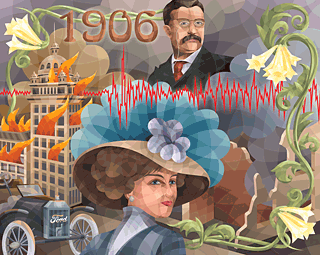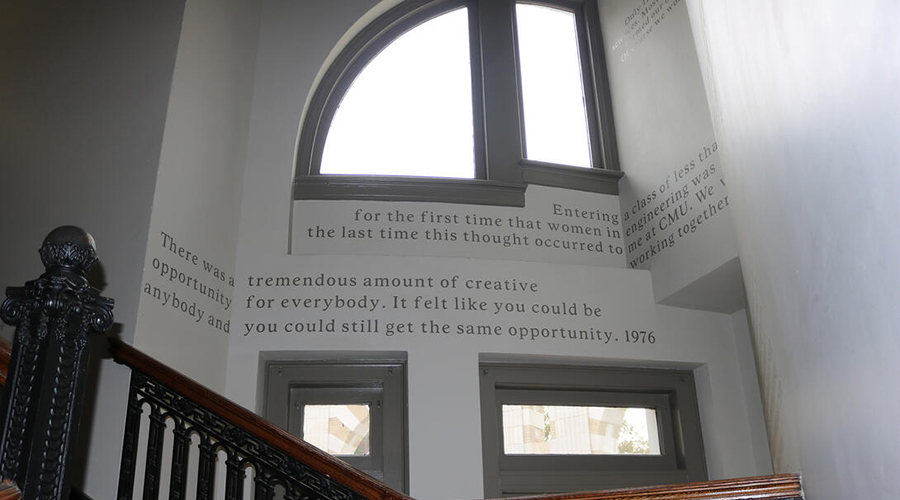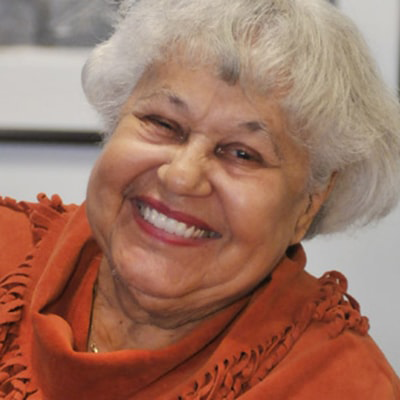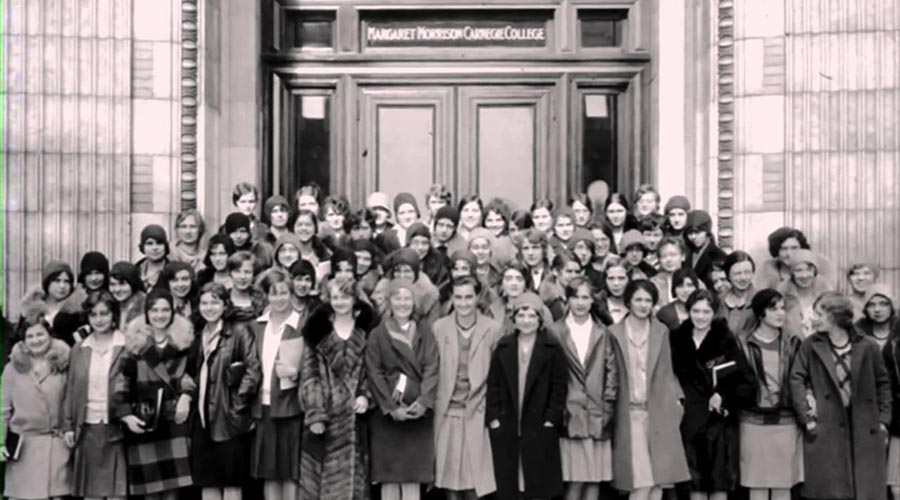A Home for Women’s Education
Among the many things Andrew Carnegie wanted to accomplish when he founded Carnegie Technical Schools in the early 20th century was honoring his mother, Margaret Morrison, who brought her family to the United States from Scotland in 1848.
The Margaret Morrison Carnegie School for Women opened in 1906, as a school that initially focused on vocational subjects. That changed quickly, as female students asked for a more thorough education, including literature, the sciences and the arts. As Carnegie Tech evolved, so did Margaret Morrison, becoming Margaret Morrison Carnegie College and offering four-year degrees for the first time in 1912.
Through 1967, the school’s classes and offerings grew increasingly more integrated into the Carnegie Institute of Technology. The closing of Margaret Morrison in 1973 marked the opening of the College of Humanities and Social Sciences and full integration of women into the university. Margaret Morrison Carnegie Hall, still a landmark on campus, is home to CMU’s School of Design.
In a letter to the Board of Trustees, Andrew Carnegie wrote that he cherished Margaret as the person “to whom [he] owes everything.”
 Margaret Morrison Carnegie School for Women became one of four schools offering two-year certificates and three-year diplomas to students and working professionals from Pittsburgh and neighboring towns. In contrast to the “Seven Sisters,” the elite, all-female liberal arts universities in New England, Carnegie placed a greater focus on trade studies.
Margaret Morrison Carnegie School for Women became one of four schools offering two-year certificates and three-year diplomas to students and working professionals from Pittsburgh and neighboring towns. In contrast to the “Seven Sisters,” the elite, all-female liberal arts universities in New England, Carnegie placed a greater focus on trade studies.

Although some of the major disciplines available to us may seem archaic to current students, for our era they were relevant. Our education was rigorous. Our women professors were the forerunners of the feminist movement and inspired us to take charge of our lives, to not be afraid to speak out for what we believed was right and to demand excellence in all that we did.
— Eileen McConomy (MM 1956)
Steering committee chairperson of the MMCC Centennial in 2012
 Today, Margaret Morrison Carnegie Hall’s entrance features a large portrait of Margaret and the stairwells are stenciled with quotes from female students throughout the history of Carnegie Tech and the Carnegie Institute of Technology.
Today, Margaret Morrison Carnegie Hall’s entrance features a large portrait of Margaret and the stairwells are stenciled with quotes from female students throughout the history of Carnegie Tech and the Carnegie Institute of Technology.

I learned the discipline of shaping ideas into a form that communicates them to others.
— Elaine Lobl Konigsburg (MM 1952)
Scientist-turned-author with nearly two-dozen children’s books to her credit
While teaching chemistry at a private girls’ school, Konigsburg discovered that she was “more interested in what was going on inside my students than inside the test tubes.” That interest grew even stronger as she raised her own three children — and when the youngest was in kindergarten, she began to write. “From the Mixed-Up Files of Mrs. Basil E. Frankweiler,” “The View From Saturday” and her other works challenge and delight young readers with timeless plots, believable characters and authentic settings. They also won awards — plenty of them; she’s the only author ever to have won the American Library Association’s prestigious Newbery Medal and its second-place “honor book” designation in the same year.

A day isn’t complete unless you’ve added some new information to your storehouse of knowledge. You must keep learning.
— Vivian Hewitt (CMU 1944; HON 2017)
Pittsburgh’s first African American librarian, and later the first African American president of the Special Libraries Association
 In Pittsburgh, Atlanta and then Manhattan, Hewitt’s library career thrived, culminating in the position of chief librarian at the Carnegie Endowment for International Peace. In 1978, she received an honorary LHD degree from her undergraduate alma mater, Geneva College. Along the way, Hewitt and her husband John, an editor of professional journals, visited galleries, studios and salons, buying art they loved. Though their means were modest, their taste was impeccable, and during 50 years they built a collection that includes some of today’s best-known African-American artists — for example, Romare Bearden, Jacob Lawrence, and Carnegie Mellon alumna Ann Tanksley.
In Pittsburgh, Atlanta and then Manhattan, Hewitt’s library career thrived, culminating in the position of chief librarian at the Carnegie Endowment for International Peace. In 1978, she received an honorary LHD degree from her undergraduate alma mater, Geneva College. Along the way, Hewitt and her husband John, an editor of professional journals, visited galleries, studios and salons, buying art they loved. Though their means were modest, their taste was impeccable, and during 50 years they built a collection that includes some of today’s best-known African-American artists — for example, Romare Bearden, Jacob Lawrence, and Carnegie Mellon alumna Ann Tanksley.

I had the most marvelous experience. I want to do everything I can to give back to the current and future students.
— Patricia Askworth Kenner (MM 1966)
 Patti Kenner, a Carnegie Mellon board member, graduated from the school in 1966. An arts lover, she was drawn to the university because of its mix of liberal arts and theater. She spent every Saturday morning practicing calligraphy on campus. All the while, she studied French, and served as president of her sorority. An active, dedicated supporter of CMU to this day, Kenner was instrumental in establishing the Maggie Murph Cafe in the Hunt Library.
Patti Kenner, a Carnegie Mellon board member, graduated from the school in 1966. An arts lover, she was drawn to the university because of its mix of liberal arts and theater. She spent every Saturday morning practicing calligraphy on campus. All the while, she studied French, and served as president of her sorority. An active, dedicated supporter of CMU to this day, Kenner was instrumental in establishing the Maggie Murph Cafe in the Hunt Library.